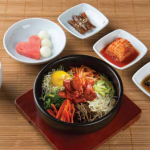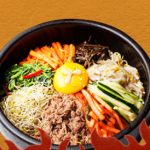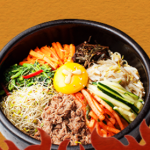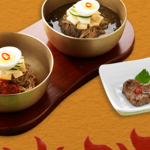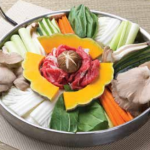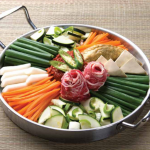Have you ever wondered what makes Korean cuisine so irresistibly delicious? Prepare to embark on a flavorful adventure as we uncover the key ingredients that bring the magic to Korean dishes. But hold on tight, because we’re about to take a humorous twist on this delectable journey!
Introduction: Unveiling the Mysterious Ingredients in Korean Delicacies
Step into the realm of Korean cuisine, where tantalizing aromas and vibrant colors blend harmoniously to create a culinary extravaganza. From the spicy and fiery kimchi to the savory and comforting bibimbap, the secret to these mouthwatering dishes lies in the unique combination of ingredients. So, let’s dive right in and explore the key players!
The Unruly Heroes of Korean Flavor
1. Gochujang: The Mischievous Red Pepper Paste
In the land of Korean cuisine, meet gochujang, the mischievous yet essential ingredient known for its fiery kick. Made from fermented soybeans, rice, and, most prominently, red chili peppers, gochujang adds that distinctive depth of flavor to dishes like bulgogi and tteokbokki. Just a spoonful of this vibrant red paste will send your taste buds on a rollercoaster ride of spiciness and rich umami.
2. Kimchi: The Funky Fermented Companion
No discussion about Korean cuisine is complete without mentioning the mighty kimchi. This funky staple is made by fermenting napa cabbage with chili, garlic, fish sauce, and a medley of unique seasonings. Bursting with a tangy and slightly sour taste, kimchi accompanies almost every Korean meal. Whether you’re a kimchi lover or newcomer, this addictive side dish is sure to tickle your fancy.
3. Galbi: The Charismatic Grilled Rib
Prepare to meet the irresistible charm of galbi, the delectable grilled beef or pork ribs. A burst of flavors awaits as these succulent ribs are marinated in a combination of soy sauce, garlic, ginger, and other tantalizing ingredients. The result? Tender meat with a slightly sweet glaze that will have you licking your fingers in delight.
4. Sesame Oil: The Smooth Talker
To add depth and aroma to Korean dishes, enter sesame oil, the smooth talker of the culinary world. Made from roasted sesame seeds, this dark golden oil possesses a nutty and earthy flavor that elevates the taste of various Korean delicacies. From stir-fried vegetables to savory marinades, sesame oil is a versatile ingredient that never fails to impress.
Conclusion: A Symphony of Korean Delights
As our flavorful adventure through Korean cuisine comes to an end, we hope you’ve had a good laugh and a tantalizing taste of the key ingredients that make Korean dishes so universally loved. So, why not embark on your own gastronomic journey and experience the magic of Korean flavors in your kitchen?
FAQ Section
Q1: Are Korean dishes always spicy?
No, Korean cuisine offers a wide range of flavors, from spicy to mild. While spice is a signature element in many Korean dishes, there are also plenty of non-spicy options to explore and enjoy.
Q2: Can vegetarians enjoy Korean cuisine?
Absolutely! Korean cuisine includes a variety of vegetable-based dishes that are perfect for vegetarians. From the deliciously seasoned vegetable side dishes (banchan) to vegan-friendly versions of popular dishes like bibimbap, there are countless options to satisfy vegetarian taste buds.
Q3: Are Korean dishes healthy?
Korean cuisine is known for its incorporation of fresh ingredients and balanced flavors. While there are some dishes that may lean towards the indulgent side, such as Korean fried chicken or sweet desserts, many traditional Korean dishes focus on vegetables, lean proteins, and fermented ingredients, making them a healthy choice.
Q4: What is the national dish of Korea?
Although there is no official national dish of Korea, kimchi is often considered a cultural icon and a representative dish. It is deeply ingrained in Korean culinary culture and enjoyed by people of all ages.
Q5: Can I find Korean ingredients in my local grocery store?
With the growing popularity of Korean cuisine worldwide, many grocery stores now carry a variety of Korean ingredients. However, if you’re having trouble finding specific items, Asian supermarkets or online stores specializing in Korean products are great places to explore.
Now, armed with the knowledge of these key ingredients, go forth and create your own Korean culinary masterpieces. Embrace the flavors, laugh at the mischievousness of gochujang, and relish the umami-packed journey that Korean cuisine offers. Magweh sihat!
[Magweh sihat – Malay: Bon appétit]

